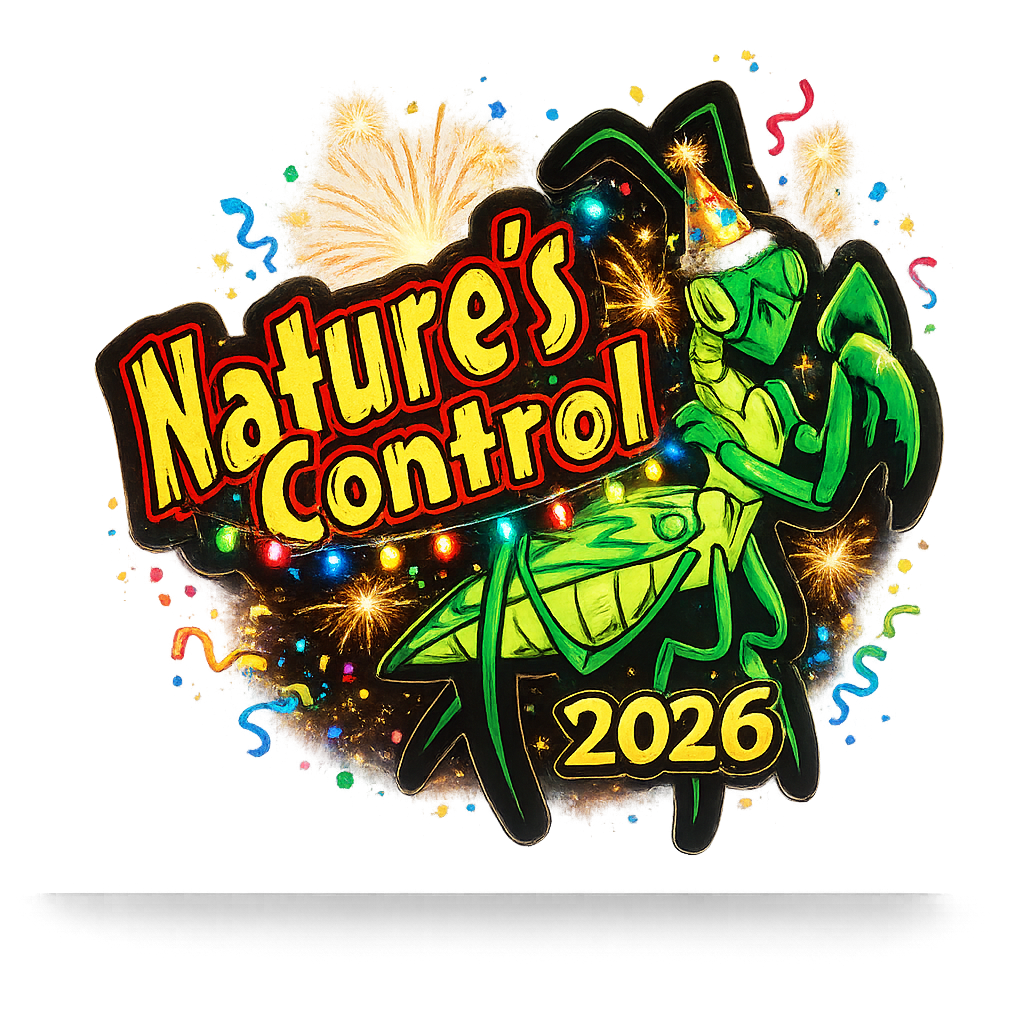Pest: Aphids

First Sign: Wilted-looking plants that aren't thriving. Looking closer, dense colonies of tiny (1/32" - 1/8") soft bodied, pear-shaped insects are seen, expecially on tender growing tips and undersides. Young Aphids look like miniature adults. And the whole family will be found feeding together.
Species Identification: Aphids come in almost every color. They can be green, yellow, pink, brown, black or any shade in between. To be certain of an Aphid diagnosis, use a magnifier to find the pair of tiny "dual exhaust pipes" on their posteriors. These are properly termed "cornicles" and Aphids are the only insects that have them.
Special Species Notes: Aphids feed by sucking plant juices, which is damaging enough, but the most serious damage comes from the plant diseases they carry. They also produce honeydew. This can grow an unsightly, and potentially fatal, sooty black mold, which hoses off, or washes off with soapy water. Aphids multiply so rapidly because they're born pregnant. In fact, there are tiny secondary embryos inside the first embryos!
Add to this the fact that Aphids reach adulthood in one week and you can see why they can wreak such rapid devastation. Finally, there are so many Aphid species that just about every plant has at least one species that likes it.
Most Popular Control:
Ladybugs
Typically, Ladybugs (Hippodamia convergens) eat over 5,000 Aphids and other soft-bodied pests during their one-year lifetime. Ladybugs are one of the few beneficial insects that can be stored, dormant, in the refrigerator for up to a few weeks, depending on the time of year, as long as they don't freeze or dry out. This allows you to use a few at a time, as needed.
If Ladybugs tend to fly away, spraying their backs with a soda pop/water solution glues their wings shut for about a week. We include instructions for this, as well as detailed release notes with your order.
Most Effective Control:
Aphid Predators
Aphid Predators (Aphidoletes aphidimyza) have worked so well in many greenhouses, that, by Summer, Aphids may be hard to even find. Breeding populations of predators are usually established from a single release, but regular weekly releases during the growing season speeds up control. 1,000 Aphid Predators treats up to 10,000 sq. ft. of greenhouse space.
Special Species Notes: Aphid Predators have a soil-resting phase as part of their lifecycle, so should not be used at the same time as Predatory Nematodes .
Application: Aphid Predators are shipped to you as cocoons, waiting to hatch, packaged in bottles. Spread the contents on the soil or leaves.
Handy Hint: In greenhouses, a few specimen house plants kept all year long, in addition to the main crop, can be major sources of infestations. Check any year-round specimen plants particularly closely for pests.
Aphid Parasites (A. matricariae) are our newest tool in the battle against Aphids. They lay their eggs inside living Aphids, which then develop into leathery-looking"mummies". A new adult parasite then flies out from a circular hole cut in the mummy.
Special Species Notes: Parasites have been proven successful in European greenhouses, and are shipped near hatching or as adults (no choice).
Application: Shake directly from shipping container onto leaves. For preventive control, apply regular small releases throughout the growing season.
Green Lacewing Larvae/Eggs
For use against Aphids, Thrips, Mealybugs and Whiteflies.
Looking like tiny alligators, Lacewing larvae (Chrysopa rufilabris) voraciously attack almost any prey they can grab.
Green Lacewings are available as eggs in a cup, eggs glued to cards which are hung from foliage, or as pre-hatched ready to go larvae.
Application: Eggs and larvae can be hand sprinkled almost anywhere because Lacewings search up to 100 feet for their first meal. Lacewing eggs may be refrigerated for a few days at 38-45 F. to delay hatching, but be careful not to freeze them. Typical egg release rates range from 5000 - 50,000 eggs per acre, depending on infestation levels. Typical larvae release rates range from 1000-5000 per acre, repeated every 2-4 weeks as required.
Handy Hint: Want to really keep out pests? Consider adding a footbath to deter any "travelers". Just add a little bleach to some water in a shallow pan, and walk through it as you enter the greenhouse. Have visitors use it too.
Anystis baccarum (Crazee Mite) Units of 1000
Introducing Anystis baccarum (Crazee Mite) - Your Ultimate Biological Pest Control Solution &nb..
Anystis baccarum (Crazee Mite) Units of 250
Introducing Anystis baccarum (Crazee Mite) - Your Ultimate Biological Pest Control Solution &nb..
Anystis baccarum (Crazee Mite) Units of 50
Introducing Anystis baccarum (Crazee Mite) - Your Ultimate Biological Pest Control Solution &nb..
Mammoth Canncontrol
Mammoth Canncontrol is lab and greenhouse tested – proven to eliminate powdery mildew, botrytis..
Aphid Predators (Aphidoletes aphidimyza)
Most Effective Aphid Control: Aphid Predators Special Order P..
Aphid Parasites (Aphidius colemani + Aphidius matricariae)
Most Effective Pest Management: Aphid Parasites for Sustainable and Regenerative Agriculture Invasio..
Ladybugs (Hippodamia convergens)
Ladybugs: Natural and Most Effective Aphid Control Solution Nature's Control is your trusted source..
Pirate Bugs (Orius insidiosis)
Minute Pirate Bugs (Orius insidiosis): Mainly for use against Thrips, Aphids&nb..
Green Lacewing Larvae Eggs (Chrysoperla carnea) Eggs on Cards
Green Lacewing Larvae Eggs: For use against Aphids, Thrips, Mealybugs ..
Green Lacewing Larvae (Chrysoperla carnea) "Ready to Go" Larvae
Green Lacewing Larvae "Ready to Go" Larvae: For use against Aphids, Thrips..
Yellow-Sticky Traps Catch Fungus Gnats, Whiteflies, Aphids, and Other Insects Attracted to the Color of Bright Yellow
Yellow Sticky TrapsHang these Yellow Sticky Traps around your growing area to catch Whitef..









